Pre-First World War
The tradition of military service by Black Canadians goes back long before Confederation. Indeed, many Black Canadians can trace their family roots to Loyalists who emigrated North in the 1780s after the American Revolutionary War. American slaves had been offered freedom and land if they agreed to fight in the British cause and thousands seized this opportunity to build a new life in British North America.This tradition of military service did not end there, with some Black soldiers seeing action in the War of 1812, helping defend Upper Canada against American attacks. A number of volunteers were organized into the “Company of Coloured Men,” which played an important role in the Battle of Queenston Heights. Black militia members also fought in many other significant battles during the war, helping drive back the American forces. Black soldiers also played an important role in the Upper Canadian Rebellion (1837–1839). In all, approximately 1,000 Black militia men fighting in five companies helped put down the uprising, taking part in some of the most important incidents such as the Battle of Toronto.
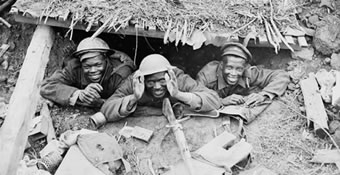
Three soldiers in a German dugout captured during the Canadian advance east of Arras, France in October 1918.
Black people in the West also forged their own military traditions. In the late 1850s, hundreds of Black settlers moved from California to Vancouver Island in pursuit of a better life. Approximately 50 of the new immigrants soon organized the Victoria Pioneer Rifle Corps, an all-Black volunteer force also known locally as the “African Rifles.” While the corps was disbanded by 1865 after only a few years of existence, it was the first officially-authorized militia unit in the West Coast colony.
While relatively few Black Canadians served in the military in the years immediately following Confederation, a few were part of the Canadian Contingent that went overseas during the South African War of 1899–1902. However, the First World War that erupted a decade and a half later would see a great change in how Black Canadians served.
First World War
Like so many others swept up in the excitement and patriotism that the First World War (1914-1918) initially brought on, young Black Canadians were eager to serve King and country. At the time, however, the prejudiced attitudes of many of the people in charge of military enlistment made it very difficult for these men to join the Canadian Army. Despite the barriers, some Black Canadians did manage to join up during the opening years of the war. Black Canadians wanted the chance to do their part on a larger scale, however, and pressured the government to do so.On July 5, 1916, the No. 2 Construction Battalion was formed in Pictou, Nova Scotia—the first large Black military unit in Canadian history. Recruitment took place across the country and more than 600 men were eventually accepted, most from Nova Scotia, with others coming from New Brunswick, Ontario, the West and even some from the United States. The Black Battalion’s chaplain was Reverend William White, who had also played a leading role getting the unit formed. He was given the rank of Honourary Captain—one of the few Black commissioned officers to serve in the Canadian Army during the war.
The segregated battalion was tasked with non-combat support roles. After initial service in Canada, the battalion boarded the SS Southland bound for Liverpool, England in March 1917. Its members were sent to eastern France later in 1917 where they served honourably with the Canadian Forestry Corps. There they helped provide the lumber required to maintain trenches on the front lines, as well as helped construct roads and railways. After the end of the First World War in November 1918, the men sailed to Halifax in early 1919 to return to civilian life and the unit was officially disbanded in 1920.
In addition to the men of the Black Battalion, an estimated 2,000 Black Canadians, such as James Grant, Roy Fells, Seymour Tyler, Jeremiah Jones and Curly Christian, were determined to get to the front lines and managed to join regular units, going on to give distinguished service that earned some of them medals for bravery.
Black Canadians also made important contributions on the home front. They helped achieve victory by working in factories making the weapons and supplies needed by the soldiers fighting overseas, and by taking part in patriotic activities like raising funds for the war effort.
Today, the dedicated service of the "Black Battalion" and other Black Canadians who fought in the First World War is remembered and celebrated as a cornerstone of the proud tradition of Black military service in our country.
Second World War
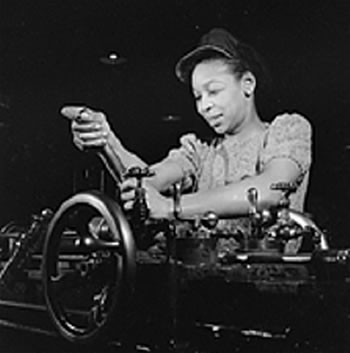
Cecilia Butler working in the John Inglis Company munitions plant in Toronto during the Second World War, December 1943.
In the early years of the war, however, the Royal Canadian Navy and Royal Canadian Air Force were not as inclusive in their policies. This did not mean that trail-blazing Black Canadians did not find a way to persevere and serve. Some Black sailors served in the Navy, and Black airmen served in the Air Force as ground crew and aircrew here at home and overseas in Europe.
The contributions of Black servicemen was second to none and several earned decorations for their bravery. Some Black women joined the military as well, serving in support roles so that more men were available for the front lines.
And back on the home front, Black Canadians again made important contributions by working in factories that produced vehicles, weapons, ammunition and other materials for the war effort, and taking part in other patriotic efforts like war bond drives. For example, Black women in Nova Scotia worked in vital jobs in the shipbuilding industry, filling the shoes of the men who would usually do that work but who were away fighting in the war.
Many Black Veterans returned home after the war with a heightened awareness of the value of freedom and their right to be treated as equals after all they had done for Canada in their country’s time of need. The service of Black Canadians in the Second World War remains a point of pride and was a measure of how Black Canadians were becoming increasingly integrated into wider Canadian society.
Korean War and the Post-War Years
Since the end of the Second World War, the tradition of Black Canadian service in the military has expanded and evolved.In the Korean War (1950–1953), Canadians returned to the battlefield scarcely five years after the end of the Second World War, travelling halfway around the world to join the United Nations forces fighting to restore peace in Korea. Black soldiers were among the Canadian Army troops that were sent to fight so far from home.
While some last traces of discrimination continued in Canadian military recruiting practices into the mid-1950s, Black Canadians became more established in the Royal Canadian Navy and Royal Canadian Air Force, as well. For example, Raymond Lawrence joined the Navy in 1953, rising to become the first Black Petty Officer 1st class and first Black coxswain on a Canadian ship.
The Air Force’s Major Stephen Blizzard was a flight surgeon and also got his wings in the 1960s as a jet pilot during a long and varied career in the Canadian military—a trailblazer both in the air and in medicine. He also made important contributions to aviation medicine in both the military and civil fields.
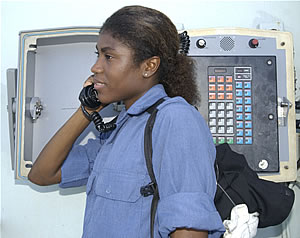
Ordinary Seaman Lisa Nelson relays information from the bridge during drills aboard HMCS Regina patrolling the Gulf of Oman in 2003.
Today, Black Canadians standing on the shoulders of the trailblazers who led the way continue to serve proudly in uniform where they share in the sacrifices and achievements being made by the Canadian Forces. Our country’s efforts in Afghanistan have come at a high cost, one that has been borne by Black soldiers, as well. Brave men like Ainsworth Dyer and Mark Graham are among the more than 150 Canadian Forces members who have died in Afghanistan since 2002.
http://www.veterans.gc.ca/eng
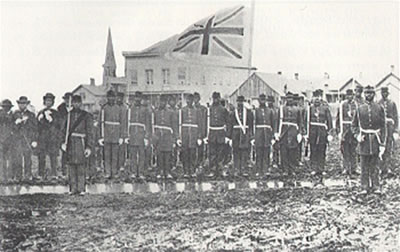
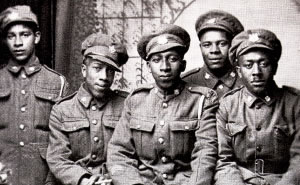
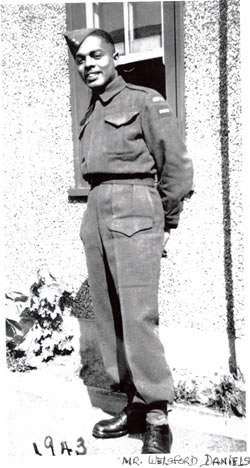

No comments:
Post a Comment